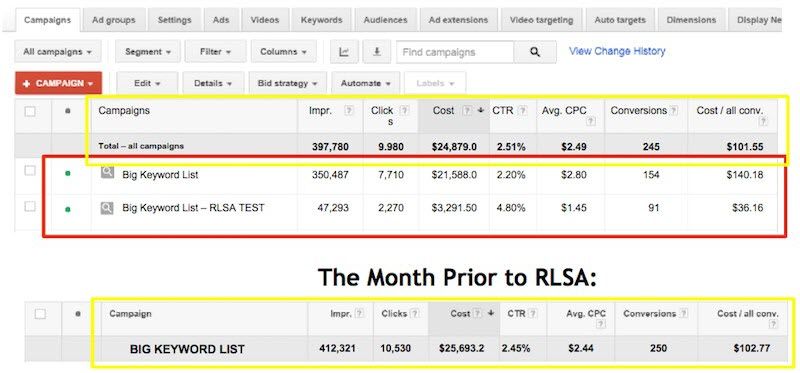Paid search is a pretty awesome channel, but it's not without its challenges.
As the chart below illustrates, the cost per click (CPC) in certain highly competitive verticals can get super expensive – we're talking more than $100 per click in some cases, for industries like law and finance.

(This is Bing data, but it's a similar story in AdWords.)
Another challenge is that conversion rates really haven't changed much in 15 years, whether you're selling washing machines or alarm clocks. It's around 2.5%.
Finally, we know that desktop search query volume peaked in 2013 and that more searches are happening on the smaller, more competitive screens of mobile devices.
As marketers, we want to get more for less. We want more conversions and we want them to cost less so we can maximize our profits, right?
I frequently get emails like this:
Larry, how do you make money with PPC today?
If my cost per click goes from $1.50 to $4 with a Quality Score of 9 or 10, and it takes 75 to 100 clicks to make a sale, the cost of acquisition goes from $150 to $400. I can't believe I'm the only one in this boat!
Is there a way we can overcome these big challenges – knowing that in the near future search, inventory will remain flat, CPCs will keep being expensive, and conversion rates won't change? Can businesses in competitive industries stay the course? Is there a way we can turn this ship around and make sure we get more for less?
Will RLSA save the day?
With RLSA (remarketing lists for search ads) you tailor your paid search campaigns based on whether users have previously visited your website (or app) and which pages they viewed.
So is RLSA the superhero technology we've been waiting for? Let's look at some data.

In this account, we can see two campaigns that have the exact same keywords. It's just that one is targeted to existing site visitors (through remarketing) and the other is targeted to new visitors.
Notice how the RLSA campaign has a third the cost per conversion ($36 vs. $100)? That's because that audience is already familiar with your brand.
See how the click-through-rate (CTR) for RLSA is double (4.8 percent vs. 2.2 percent)? That's because they're familiar with your brand.
And notice how the average CPC for RLSA is about half as expensive ($1.45 instead of $2.80)? That's because of the higher Quality Score (in turn because of the higher CTR).
This is all very interesting. You have this technology that basically lets you find the conversions and clicks from people who are going to click through at twice the rate, half the costs, and triple the conversion rate.
Awesome, right?! Well…
RLSA may be super, but it's no hero
There's one problem: RLSA doesn't create new volume. It actually cuts volume substantially. You're only getting about a tenth of the volume.
And to make things worse, if you look at the previous month, RLSA added nothing in terms of total conversions (245 this month vs. 250 last month).
Looked at in these terms, RLSA is kind of a shell game. It's segmenting the cheap conversions out of a bucket of conversions that used to include both cheap conversions and expensive conversions.
You're just cherry-picking the 10% of cheap conversions out of the pile you would've gotten anyway, and looking at them in isolation. It's all well and good to get those conversions, but you're still basically stealing all the cheap conversions from your existing campaigns.
While this may be interesting if you're limited by budget (e.g., you only have $100 to spend), most marketers want to see more quantity at better costs. RLSA delivers on cost savings, but it actually cuts down on the amount of conversions. It's almost like all you're doing is applying a repeat visitor vs. new visitor segmentation on your conversion set.
So what's a marketer to do?
The ridiculously awesome new way forward
So we all know the issues with RLSA.

But what's the solution?
What follows won't be a solution for everyone. This applies only to certain verticals that have very high CPCs where there's a lot of competition and where conversion rates are challenging. This strategy will be especially game-changing if you've got a small marketing budget and you want to make sure that budget goes as far as possible.
The crazy new idea is to only do RLSA and completely forget about doing unbranded vanilla search ads.
Then, use the power of social media ads to dramatically – I'm talking 10x to 100x – increase the size of your cookie pools.
If you can increase the size or your remarketing pool by 10x, then it stands to reason that you'll get 10x more conversions. That means instead of getting only 10 conversions, you'll get 1,000!
This is an abridged version of Larry Kim's post as published on WordStream, for more information visit Larry's blog.
No comments:
Post a Comment